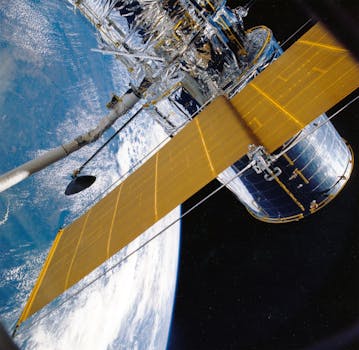
Beyond Earth: How Recent Advances Are Shaping Satellite Telecommunications
Satellite telecommunications, or satellite communications, is a vital part of our global communication infrastructure. Focus Keyword: Satellite Telecommunications has come a long way since the launch of the first commercial communications satellite, Intelsat 1, in 1965. Recent advances in space technology, materials science, and digital signal processing have led to significant improvements in satellite communications, enabling faster, more reliable, and more secure data transmission. In this article, we will explore the latest developments and innovations in satellite telecommunications and their impact on our daily lives.
The development of new satellite constellations, such as OneWeb and Starlink, is one of the most significant recent advances in satellite telecommunications. These constellations consist of hundreds or even thousands of small satellites in low Earth orbit (LEO), which provide global coverage and high-speed internet connectivity. The use of LEO satellites reduces latency and increases data transfer rates, making it possible to support real-time applications such as video conferencing, online gaming, and virtual reality.
Another important development in satellite telecommunications is the advent of high-throughput satellites (HTS). HTS satellites use advanced technologies such as beamforming and frequency reuse to increase the amount of data that can be transmitted through a single satellite. This has led to a significant increase in the capacity of satellite communications systems, enabling them to support a wide range of applications, from broadband internet access to mobile backhaul and enterprise networks.
Advances in Space Technology
Recent advances in space technology have played a crucial role in shaping the future of satellite telecommunications. The development of new launch vehicles, such as the SpaceX Falcon 9 and the Blue Origin New Glenn, has reduced the cost of launching satellites into orbit, making it more accessible and affordable for companies to deploy their own satellite constellations. Additionally, the use of advanced materials and manufacturing techniques has enabled the production of smaller, lighter, and more efficient satellites, which can be launched at a lower cost and with greater flexibility.
The development of electric propulsion systems is another significant advance in space technology. Electric propulsion systems use electrical energy to propel a spacecraft, rather than traditional chemical propulsion systems. This has several advantages, including increased efficiency, reduced fuel consumption, and greater maneuverability. Electric propulsion systems are being used in a variety of satellite applications, including station-keeping, orbit raising, and interplanetary missions.
Impact on Global Communications
The recent advances in satellite telecommunications are having a significant impact on global communications. Satellite communications are playing a critical role in bridging the digital divide, providing internet access to remote and underserved communities around the world. Satellite-based broadband services are also being used to support a wide range of applications, including distance learning, telemedicine, and emergency response.
Satellite telecommunications are also being used to support the growth of the Internet of Things (IoT). The use of satellite communications enables the connection of devices in remote or hard-to-reach areas, such as industrial equipment, vehicles, and smart home devices. This has significant implications for a wide range of industries, including manufacturing, logistics, and healthcare.
Conclusion
In conclusion, recent advances in satellite telecommunications are transforming the way we communicate beyond Earth’s boundaries. The development of new satellite constellations, high-throughput satellites, and advances in space technology are just a few examples of the innovations that are shaping the future of satellite communications. As satellite telecommunications continue to evolve and improve, we can expect to see significant advances in global communications, including the bridging of the digital divide, the growth of the IoT, and the support of a wide range of applications and industries.



